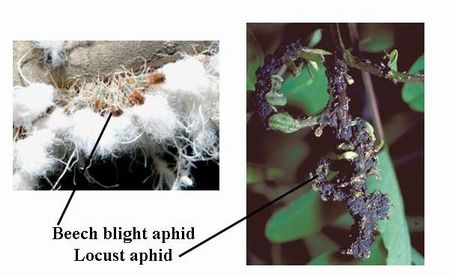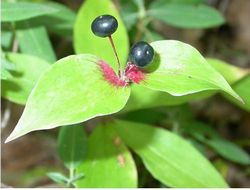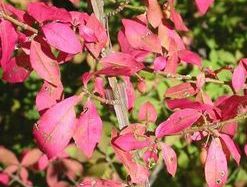You are here
The Biological Explanation of Leaf Color Change
Changes in pigments during leaf aging changes their appearance to animals. Items with longer explanations currently have broader research interest. Leaf Camouflage, Leaf Apparency, Fruit Flag and Avoiding Camouflage
Leaf Camouflage
a red or yellow color might camouflage leaves so that animals might not recognize-and eat-them.
Theory proposed by Barry Juniper
Leaf apparency
a red or yellow color might make the leaves more apparent to animals. If the signal is associated with a toxin or poor palatability, color might repel the insects and "dissuade" them from laying eggs on the plant, thus reducing damage to the plant in the following year.
This idea was raised by an eminent evolutionary biologist, William Hamilton, who died tragically from malaria in Africa before he could publish it. The hypothesis was subsequent published and defended by his associates Sam Brown and Marco Archetti.
Colorful leaves could repel visits by egg-laying insects if associated with poor edibility or even toxicity to those insects. The insects would then be attracted to less colorful plants during the autumn, without those defenses against being eaten. Their eggs would hatch and damage those trees the next year.. Many are excited about this idea, but there is not much evidence, for or against, at this point. What support that exists seems to concern yellow leaf color, as in birches, and not the red leaf colors. Hamilton and colleagues used the examples of aphids, which lay eggs on the trees where they feed, in support of this hypothesis. However, it could also affect many other insects, as long as feeding is associated with laying eggs on the same tree.
Fruit Flag
Bright leaf color might attract animals to consume less colorful fruit and increase the dispersal of seeds to other locations.
Ted Stiles, of Rutgers University, has argued that red autumn colors could promote the dispersal of inconspicuous fruits by attracting visits of fruit-eating birds. These birds would more likely find the fruits, eat them, and then effectively disperse the seeds to new sites where they could germinate and grow the following year. Fruit flags undoubtedly occur in a few situations, such as in the Indian cucumber, or perhaps in the Japanese Euonymus, which is a showy and invasive exotic in our woods. However, in the rest of the plants important in autumn color at the Harvard Forest, fruits are no longer present when the leaves change color. Thus, this hypothesis may only operate in a few cases.
Avoiding Camouflage
Bright leaf color might repel animals that would otherwise eat leaves because they would be poorly camouflaged and more likely to be picked off by their natural predators.
Theory Proposed by Simcha Lev-Yadun




